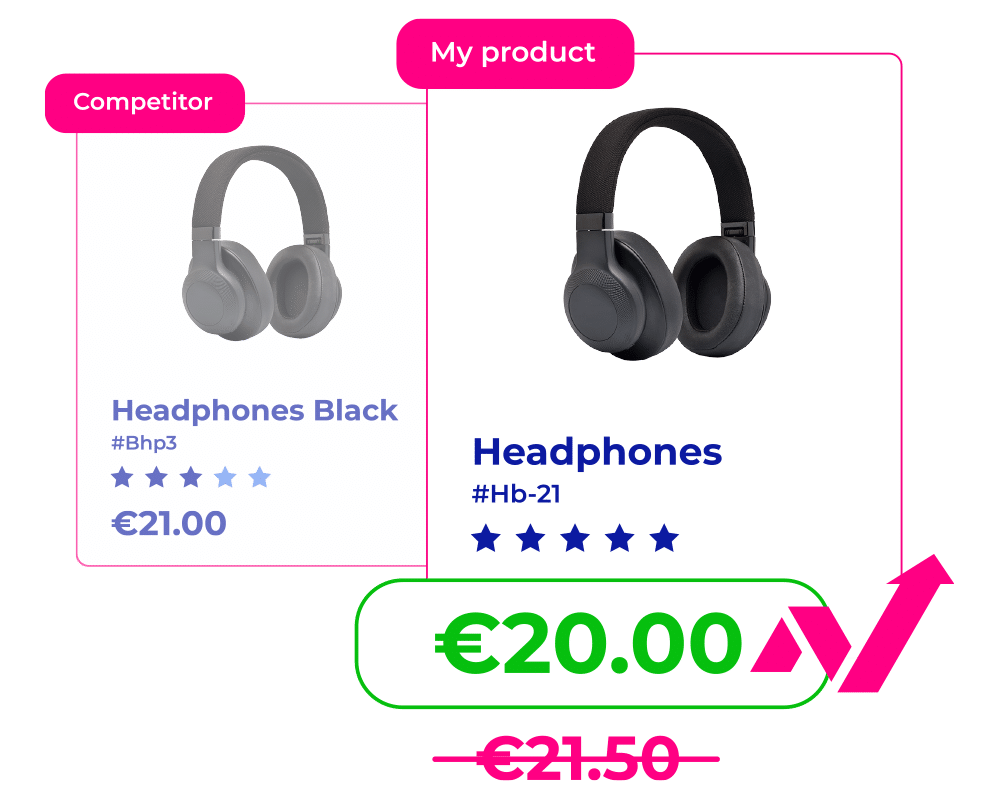Price points are the competitive value of the products resulting from the study of supply and demand behaviour. The price points then represent the amount of goods you would sell at price x. This can be displayed in a graph like the one shown below.
In order to get competitive prices for your products, you should identify relevant aspects such as:
- Demand curve
- Profit margin
- Eelasticity of the market
- Average market price
Gathering data manually from the market you want to operate in is a time consuming and inefficient job. To do this task in an efficient way, saving time and money, we recommend the use of monitoring tools such as the software developed by netRivals.
How does it work?
To get the highest price for your items without compromising your profit margin, it’s imperative to track competitive products and prices. The tool’s operation is simple. All you have to do is upload your catalog to the application and choose identical products from your competitors. The tool will then make connections in case the rival products have an EAN or suggest connections based on similar attributes with competitor items.
When you compile all the necessary information, the tool will generate reports in which you can see the relationship of your products in relation to average market prices, see the percentage of your catalog that is competitive or see the distribution of your inventory by quartiles.
Establish price points
In order to set appropriate price points for your products, we recommend that you use dynamic pricing tools. This system will adapt the price of your products according to a set of rules that you have established. These rules include always being cheaper than a particular competitor, maintaining the profit margin of your products.
If your vertical has a high percentage of seasonality, such as the toy industry, you can save the dynamic pricing configuration and activate it when the time is right. You can also activate these dynamic pricing strategies at special events such as Valentine’s Day or Black Friday.
Thanks to the identification of price points along with the use of the dynamic pricing tool, you can get the most competitive prices in your vertical without fear of compromising the profit margin, an essential metric for the profitability of your e-commerce.
With the use of monitoring tools you will be able to acquire vital knowledge about the market in which you want to operate, how to know the demand curve or the price sensitivity of consumers, thus allowing you to set an appropriate retail price in each case.






